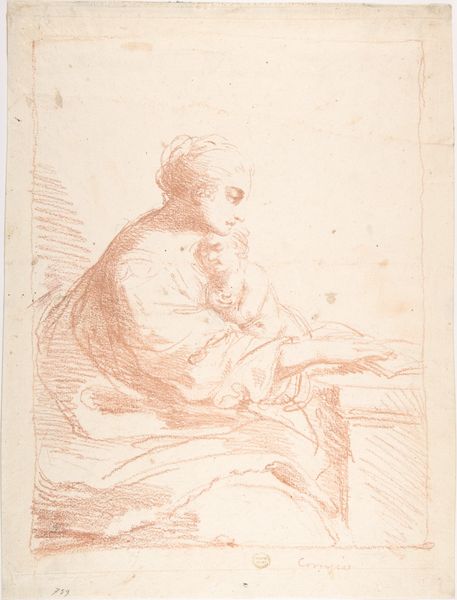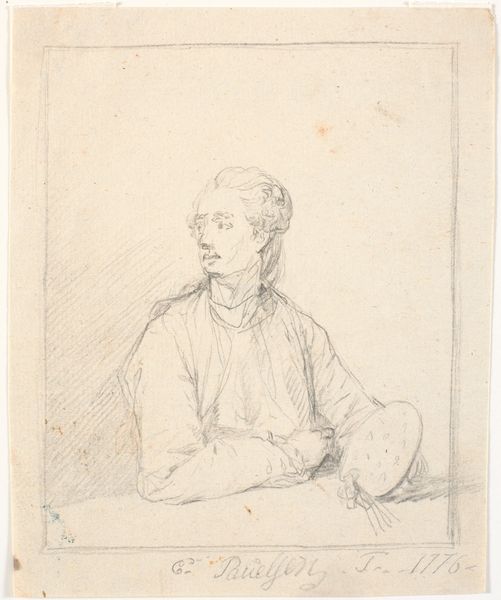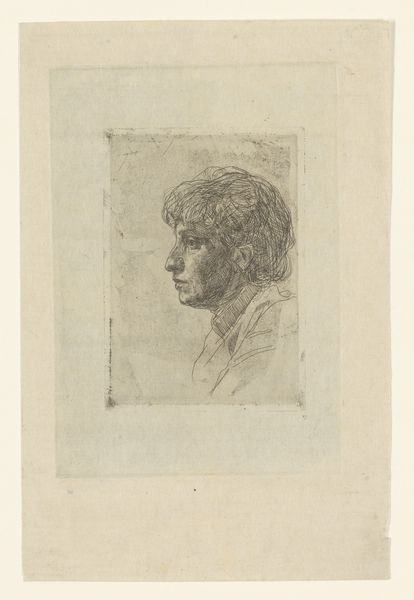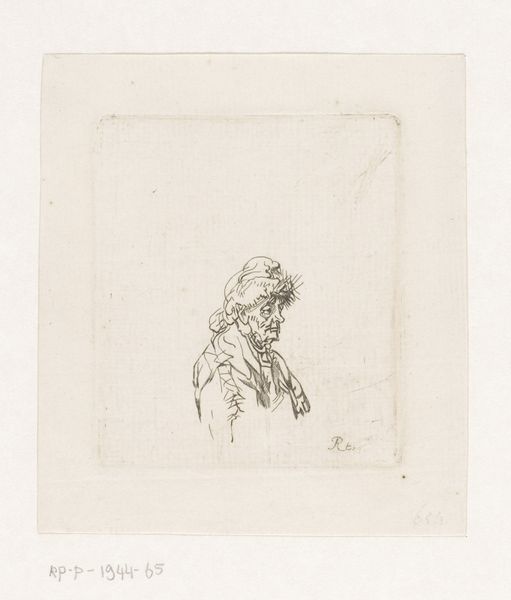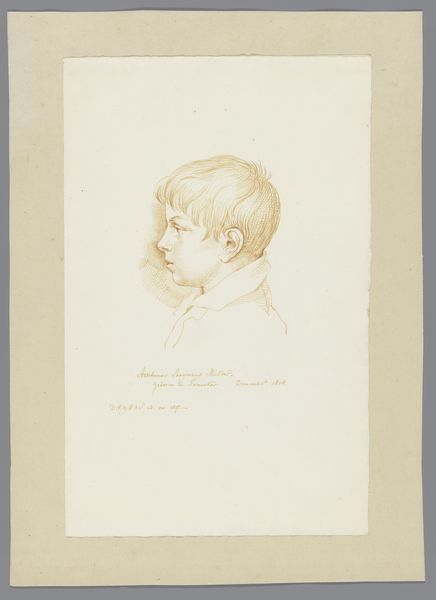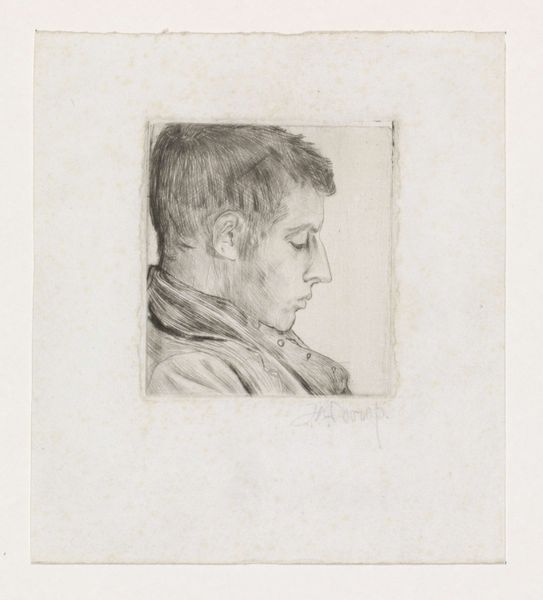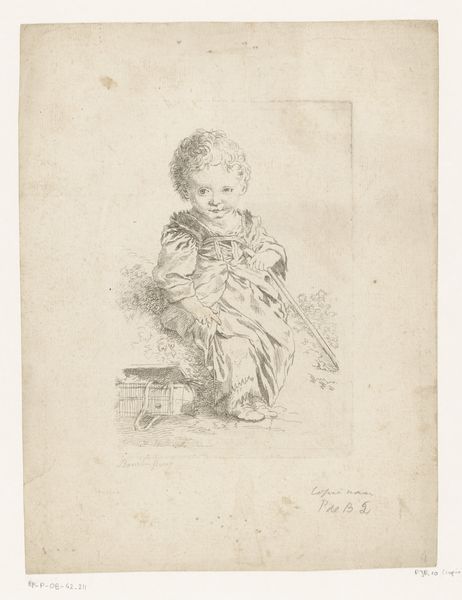
drawing, print, etching, intaglio
#
portrait
#
drawing
# print
#
etching
#
intaglio
#
romanticism
Dimensions: height 135 mm, width 93 mm
Copyright: Rijks Museum: Open Domain
Curator: Here we have "Portret van de beeldhouwer J.F. Prokof," created between 1805 and 1820 by Joseph Carl Burde. It's an etching, a delicate intaglio print currently held at the Rijksmuseum. Editor: Immediately, the figure’s downward gaze strikes me with a sense of pensive melancholy. The lines are sparse, almost hesitant, but they capture a striking vulnerability. Curator: This portrait exists within a complex network of social and artistic relations. Prokof was, himself, a sculptor of some renown, and the creation of his portrait speaks to the value placed on artists within burgeoning artistic circles of the time. The medium is telling too. Etchings allowed for relatively wide circulation compared to unique paintings or sculptures. Editor: True. And to expand on that accessibility, how might the portrait of an artist contribute to shaping their public persona, particularly within a period embracing Romanticism? There's an intentional framing of the artistic temperament here. The softened focus evokes ideas of genius. Curator: Definitely. The Rijksmuseum plays an important part in shaping the narrative and public perception of art, including how we engage with art’s legacies. Works like these were instrumental in building a visual archive of influential figures during a time when artistic reputation was still being actively forged through academies and other institutions. Editor: Absolutely. I mean, there’s a kind of quiet intensity about this piece, and that's reinforced, for me, when I consider the social construction of artistic identity. It all contributes to shaping our expectations of artists today, too. Curator: A great point. By viewing this in the context of the late 18th and early 19th centuries, and then today, it serves as an opportunity to reflect on both the enduring power of portraits and the dynamic forces that influence their meaning. Editor: And that is one important point for those today looking to forge the artistic paths that best represent them. Curator: I find the intersection of those histories and the agency of artists really exciting.
Comments
No comments
Be the first to comment and join the conversation on the ultimate creative platform.
